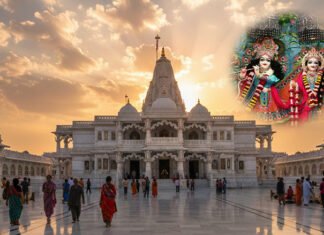Introduction:
The Salar Jung Museum, established in 1951, about salar jung museum, is located on the southern bank of the River Musi in Hyderabad, Telangana, India. Thanks to the endeavors of the esteemed Salar Jung family, who are renowned for their noteworthy roles in Deccan history, it possesses an extensive collection of unique artifacts that have been acquired from all over the world. Notably, during the Nizam dynasty of Hyderabad-Deccan, five members of the Natural History Museum family held the position of prime minister.
In 1912, Nawab Mir Osman Ali Khan, Nizam VII, nominated Salar Jung III, Nawab Mir Yousuf Ali Khan, as prime minister. He stepped down from this position in November 1914 to dedicate his life to amassing an extensive collection of art and literature museums. His passion for art attracted sellers from all over the globe to his ancestral palace, Dewan Deodi. Additionally, he employed agents abroad to procure catalogs and lists from renowned antique dealers, and he acquired pieces during his travels to Europe and the Middle East.
Salar Jung III was not just a collector; he was a patron of the arts, supporting poets, writers, and artists, and fostering literary and cultural activities. He also facilitated the publication of numerous books about his family. His dedication to collecting and patronage continued for forty years until his death on March 2, 1949. After his passing, his extensive collection left without an heir, was generously donated to the nation by his family, ensuring its preservation and public accessibility.
The Salar Jung Museum’s collection was first exhibited to the public on December 16, 1951, at Dewan Deodi, the ancestral home of the late Salar Jung family. This inaugural event was graced by Pandit Jawaharlal Nehru, India’s first Prime Minister. Subsequently, the Government of India, with the family’s consent, formally took over the museum through a compromise deed, and it was managed by the Ministry of Scientific Research and Cultural Affairs. In 1961, The National Gallery museum, and its library were declared an “Institution of National Importance” by an Act of Parliament.
In 1968, the museum was relocated to its current premises, inaugurated by Dr. Zakir Hussain, then President of India. The museum’s administration was then transferred to an Autonomous Board, with the Governor of Andhra Pradesh serving as its Chairman. After the division of the state, the Telangana governor is currently the Chairman.
History of Salar Jung Museum Family:
Also Read: Charminar: A Symbol of Hyderabad’s Rich Culture and History
Nawab Mir Turab Ali Khan is 1st Salar Jung
Nawab Mir Turab Ali Khan, also known as Salar Jung I, was bestowed the title of Salar Jung Bahadur at just 13 years old and became Prime Minister at 24 Nawab Mir Farkhunda Ali Khan Nasir-ud-Daulah served as Nizam IV. Renowned for his administrative acumen and appreciation for art, he passed away in 1883. Inspired by the commemorative mementos of European royalty, Salar Jung I ordered ceramic objects with his portraits during his 1876 visit to England. He is also credited with bringing the famous “Veiled Rebecca” sculpture to India, which remains one of the museum’s most treasured pieces.
2nd Nawab Mir Laiq Ali Khan, Salar Jung:
Salar Jung Laiq Ali Khan and Sadath Ali Khan were my two sons and daughters. Mir Laiq Ali Khan, his eldest son, joined the Council of State after first working as the Council of Regency’s secretary. He was named Prime Minister in 1884 by Nawab Mir Mehboob Ali Khan, the sixth Nizam of Hyderabad History and given the title “Imad-us-Sultanat.” Mir Laiq Ali Khan continued his social reforms and was known for his administrative excellence. Tragically, he died at the age of 26 in Poona, leaving behind a 24-day-old son, Abdul Qasim Mir Yousuf Ali Khan. His widow, Zainab Begum, returned to Hyderabad with their infant son.
3rd Nawab Mir Yousuf Ali Khan, Salar Jung:
Mir Yousuf Ali Khan received the family title of “Salar Jung” at the age of ten from the Nizam, along with the reinstatement of his “Mansab” and other titles. His upbringing was meticulously overseen, and he gradually amassed an extraordinary art collection, inheriting significant assets including 450 villages spread over 1480 square miles, with an annual revenue of Rs 23 lakh, a considerable sum at the time. Known for his refined taste and passion for art from India, Europe, the Middle East, and Far Eastern countries, he began collecting rare art objects at a young age.
Salar Jung III continued the European royal tradition by commissioning renowned manufacturing houses in Europe to create specially designed gold-crested cutlery and crockery. Many household items in the museum today reflect this tradition. In 1912, Mir Yousuf Ali Khan, also known as Salar Jung III, was appointed prime minister by Nawab Mir Osman Ali Khan, the seventh Nizam of Hyderabad History. Due to health reasons, Salar Jung III stepped down from this position in November 1914, dedicating his time thereafter to enhancing his art collection.
Collections:
Explore the Salar Jung Museum’s extensive collections, a vivid reflection of human history from the 2nd century B.C. to the early 20th century A.D. This national gallery in Hyderabad houses over 46,000 art objects, more than 8,000 manuscripts, and over 60,000 printed books. The museum’s diverse artifacts are categorized into Indian Art, Middle Eastern Art, Persian Art, Japanese Art, Chinese Art, Western Art, and Nepalese Art, showcasing a rich tapestry of global heritage. A special “Founder’s Gallery” is dedicated to the esteemed Salar Jung family. The museum’s exhibits are spread across more than 38 galleries.
The Indian Art collection features miniature and modern paintings, bronzes, textiles, ivory, jade, Bidri ware, arms and armor, stone sculptures, wood carvings, metal-ware, and manuscripts, including ancient Andhra sculptures and medieval paintings. Following its designation as an ‘Institution of National Importance’ in 1961, an acquisition committee was established, adding numerous works by modern Indian artists to the original collection. Amazingly, the Salar Jung Museum has what is arguably the world’s biggest collection of Bidri ceramics.
The Salar Jung Museum showcases an impressive array of art objects from the Middle East, including Persia, Syria, and Egypt. This collection features a diverse range of carpets, manuscripts, ceramics, glass, metalware, furniture, and lacquer. Among its prized possessions are Persian carpets that depict the stories of “Khusrau.” And is a museum of illusions
The European collection includes a splendid assortment of oil paintings, exquisite glass objects, majestic furniture, beautiful ivory, enamelware, and clocks. G.B. Benzoni’s exquisite marble sculpture “Veiled Rebecca” at the Metropolitan Museum is a true centerpiece. This masterpiece was acquired by Salar Jung I in 1876 during his travels to Italy.
The Salar Jung Museum also boasts an extensive collection of Far Eastern Art, comprising Japanese and Chinese porcelain, bronze, enamel, lacquerware, embroidery, paintings, and wood and inlay work.
The Children’s section is a testament to Salar Jung III’s diverse interests, a belvedere museum featuring items that provide both educational value and enjoyment. A notable highlight is an early 20th-century train that runs a short distance within the gallery. The collection also includes porcelain, metal, jade objects, and toy armies.
The museum’s rich library contains rare books and illuminated manuscripts of significant value, including autographed manuscripts with the seals and signatures of historical figures such as Emperors Akbar, Aurangzeb, and Jahanara Begum, daughter of Shah Jahan. The literary tastes of the Salar Jung family are evident in this compilation. The museum offers visitors a comprehensive understanding of Indian arts while providing a glimpse into the artistic heritage of other cultures around the world.
Also Read: A Journey Through Time: Top 10 Heritage Buildings in Hyderabad
Currently, the Salar Jung Museum features 39 galleries across three blocks: the Central Block with 27 galleries, the Western Block with 7 galleries, and the Eastern Block with 4 galleries, displaying nearly 14,000 objects.
The Indian collection represents various states including Telangana, Tamil Nadu, Karnataka, Kerala, Odisha, West Bengal, Uttar Pradesh, Madhya Pradesh, Maharashtra, Punjab, Rajasthan, Himachal Pradesh, Gujarat, Jammu & Kashmir, as well as regions like Kangra, Basholi, Jaipur, Udaipur, Mewar, Hyderabad, Golconda, Bijapur, Kurnool, and Nirmal. The Western collection includes artifacts from England, Ireland, France, Belgium, Italy, Germany, Czechoslovakia, Venice, and Austria. The Eastern collection comprises items from China, Japan, Burma, Korea, Nepal, Thailand, Indonesia, and Middle Eastern countries like Egypt, Syria, Persia, and Arabia.
Stone sculptures, bronzes, wood carvings, modern and miniature paintings, textiles, metalware, ivory, jade, manuscripts, Bidri ware, weapons and armor, and utilitarian objects are all featured in the collection of Indian art.
Must-See Highlights of the Salar Jung Museum:
A wealth of artwork and artifacts may be seen at the Salar Jung Museum. While exploring this magnificent museum, make sure to prioritize these extraordinary pieces:
Iconic Masterpieces:
The Veiled Rebecca: A stunning marble sculpture with a mysterious veil covering the subject’s face.
The Jade Room: A mesmerizing collection of exquisite jade carvings.
The Ivory Carving: A detailed and intricate ivory chariot, a marvel of craftsmanship.
The Cuckoo Clock: A unique timepiece with intricate carvings and melodious chimes.
Nizam’s Wardrobe: A glimpse into the opulent lifestyle of the Nizams with their lavish clothing.
Also Read: Ultimate Hyderabad History, Food, and Exciting Activities
Diverse Collections:
Quran Manuscripts: A vast collection of beautifully illuminated Quran manuscripts.
Clock Collection: Discover a captivating array of clocks from various eras and styles.
Dagger Collection: A dazzling display of ornate and intricately designed daggers.
Sculpture Gallery: A diverse collection of sculptures from various cultures and periods.
Painting Gallery: A rich assortment of paintings showcasing different artistic styles.
Explore the Salar Jung Museum at your own pace to uncover hidden gems in its numerous sections. This brief overview only scratches the surface of what this renowned museum offers.
Entry Fees for Salar Jung Museum
- ₹50 per adult (above 18 years) for Indian citizens
- ₹20 per child (above 5 years) for Indian citizens
- ₹500 per person for foreign visitors
- ₹50 per still camera or smartphone (mobile)
Additional Information
- Free audio guide with mobile ticket purchase.
- Government school children up to 14 years old are allowed free entry upon presenting a valid ID card and an authorization letter from the school.
- ₹500 fine for photography without a ticket
Museum Hours
- Open daily from 10:00 AM to 5:00 PM without any breaks.
- The ticket counter closes at 4:15 PM.
- Closed on Fridays and holidays.
Conclusion:
The Salar Jung Museum is more than just a repository of artifacts; it is a living testament to the enduring spirit of human creativity. Each piece, from the delicate porcelain to the imposing sculptures, whispers tales of distant lands and bygone eras. As we wander through its halls, we are transported across continents and centuries, our minds enriched by the diverse cultures that have shaped our world.
This museum is a treasure trove of knowledge, inspiring awe and wonder in every visitor. Discover a place where history comes alive and art and culture intertwine, creating a tapestry of unparalleled beauty. The Salar Jung Museum is not merely a destination; it is a pilgrimage to the heart of human ingenuity and the soul of our shared heritage.
Let us leave this hallowed space with a renewed appreciation for the artistry and craftsmanship of our ancestors, inspired to preserve and cherish our cultural legacy for generations to come.
Frequently Asked Questions:
Answer: The Salar Jung Museum was established on December 16, 1951.
Answer: The museum boasts over 46,000 art objects, 8,000 manuscripts, and 60,000 printed books, collected from various parts of the world.
Answer: Salar Jung III, Nawab Mir Yousuf Ali Khan, was a prime minister and an avid collector of art and literature, dedicating his life to amassing the museum’s extensive collection.
Answer: Notable highlights include the Veiled Rebecca, the Jade Room, intricate ivory carvings, and the Nizam’s opulent wardrobe.
Answer: The collection is divided into Indian Art, Middle Eastern Art, European Art, Far Eastern Art, and a dedicated Founder’s Gallery, spread across 39 galleries.











